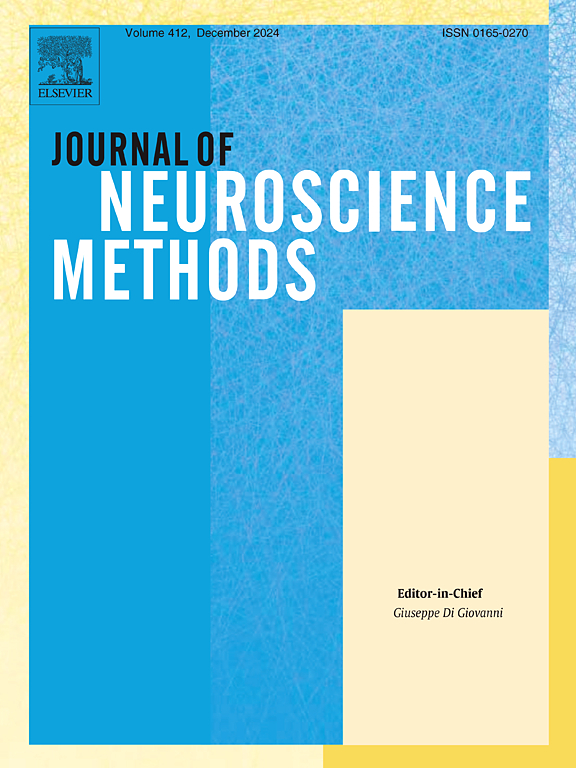3T时重叠信号分离的MRS采集方法比较。
IF 2.3
4区 医学
Q2 BIOCHEMICAL RESEARCH METHODS
引用次数: 0
摘要
背景:质子磁共振波谱(MRS)可用于定量多种神经代谢物。然而,由于在常用的3T场强下难以分离重叠信号,因此量化值通常是代谢相关化学物质的复合。这可能会使解释复杂化,并掩盖兴趣的影响。因此,确定在3T时准确分离这些信号的能力是很重要的。在7T时获得的数据可以提供一个基准,因为更高的场强有助于光谱分辨率并减少信号重叠。本研究评估了多个3T MRS序列分离常见获得性神经化学物质(谷氨酸(Glu)和谷氨酰胺(Gln))的能力;n -乙酰天冬氨酸(NAA)和n -乙酰天冬氨酸谷氨酸(NAAG);肌酸(Cr)和磷酸肌酸(PCr);胆碱(Cho)、磷酸胆碱(PC)和甘油磷酸胆碱(GPC))。我们比较了6次采集(PRESS、TE= 20、30、40、80 ms、semi-LASER、TE=28 ms和STEAM TE=6 ms)在3T时定量的代谢物与使用STEAM (TE=8 ms)在7T时定量的代谢物。结果:与7T参考数据进行相关分析和差异分析时,回声时间较短的序列(STEAM-6、PRESS-20)在分离大多数代谢物方面表现较好。例外的是NAAG, PRESS-80是最好的定量方法,Cr和PCr不能很好地分离任何序列。与现有方法的比较及结论当需要利用单体素MRS特异性分离复合代谢物信号时,通常较短的回波时间效果更好。研究人员应注意获取参数对代谢物测量的影响。本文章由计算机程序翻译,如有差异,请以英文原文为准。
Comparison of MRS acquisition methods for separation of overlapping signals at 3 T
Background
Proton magnetic resonance spectroscopy (MRS) can be used to quantify multiple neurometabolites. However, due to the difficulty of separating overlapping signals at the commonly used field strength of 3 T, the quantified values are often composites of metabolically related chemicals. This can complicate interpretation and mask effects of interest. Therefore, it is important to determine the ability to accurately separate these signals at 3 T. Data acquired at 7 T can provide a benchmark, as higher field strength facilitates spectral resolution and reduces the signal overlap.
New Methods
This study assessed the ability of multiple 3 T MRS sequences to separate the commonly acquired neurochemicals (Glutamate (Glu) and Glutamine (Gln); N-Acetyl aspartate (NAA) and N-acetylaspartylglutamate (NAAG); Creatine (Cr) and Phosphocreatine (PCr); Choline (Cho), Phosphocholine (PC) and Glycerophosphocholine (GPC)). We compared metabolites quantified at 3 T from 6 acquisitions (PRESS, TE= 20, 30, 40, 80 ms, semi-LASER, TE=28 ms and STEAM TE=6 ms) with those quantified at 7 T using STEAM (TE=8 ms).
Results
Sequences with short echo times (STEAM-6, PRESS-20) generally performed better at separating most metabolites when using correlative and difference analyses with 7 T reference data. The exceptions were NAAG, which was best quantified with PRESS-80, and Cr and PCr, which were not well separated by any sequence.
Comparison with existing methods and conclusion
When wanting to specifically separate composite metabolite signals using single voxel MRS, shorter echo times generally perform better. Researchers should be mindful of the effects of acquisition parameters on the metabolite measures.
求助全文
通过发布文献求助,成功后即可免费获取论文全文。
去求助
来源期刊

Journal of Neuroscience Methods
医学-神经科学
CiteScore
7.10
自引率
3.30%
发文量
226
审稿时长
52 days
期刊介绍:
The Journal of Neuroscience Methods publishes papers that describe new methods that are specifically for neuroscience research conducted in invertebrates, vertebrates or in man. Major methodological improvements or important refinements of established neuroscience methods are also considered for publication. The Journal''s Scope includes all aspects of contemporary neuroscience research, including anatomical, behavioural, biochemical, cellular, computational, molecular, invasive and non-invasive imaging, optogenetic, and physiological research investigations.
 求助内容:
求助内容: 应助结果提醒方式:
应助结果提醒方式:


